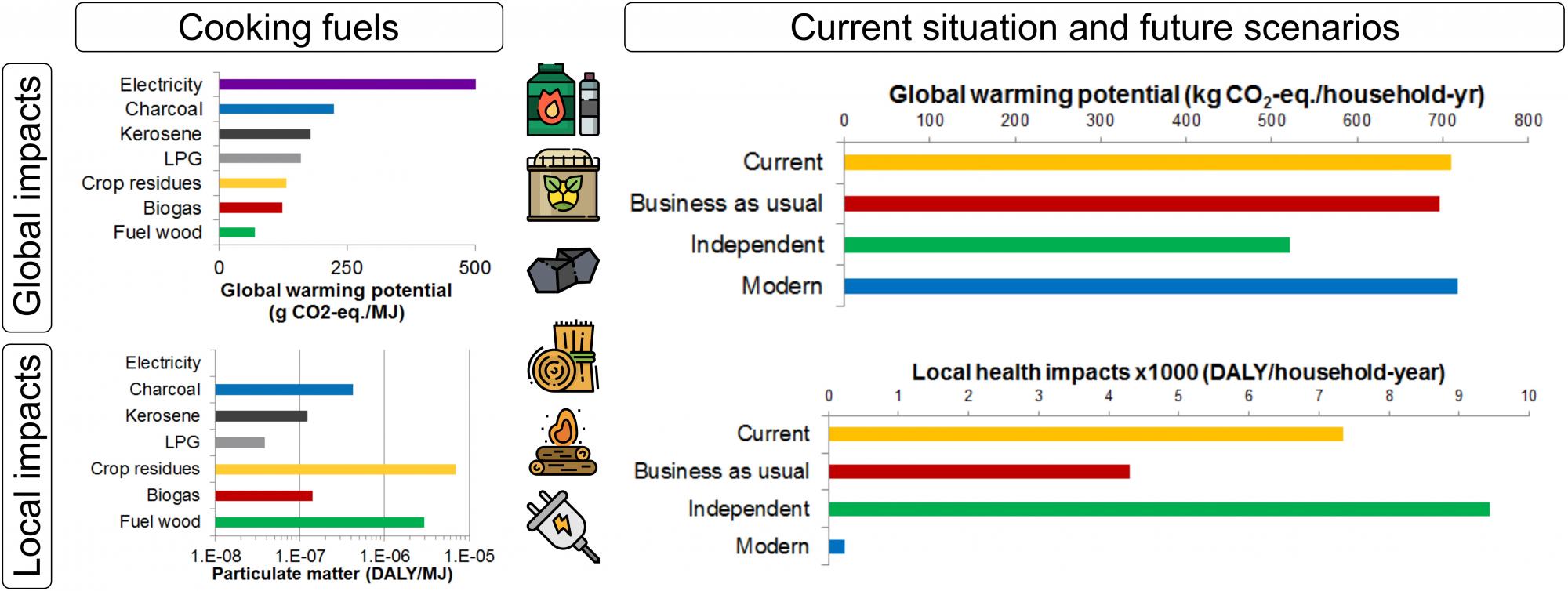Citation:
Abstract:
Access to clean cooking fuels and technologies is essential for achieving the Sustainable Development Goals, particularly in developing countries, to minimise human health and environmental impacts. This paper assesses for the first time the environmental sustainability of household cooking, focusing on remote communities in developing countries in the Southeast Asia-Pacific (SEAP) region and considering both life cycle and local impacts. To guide rural development policies, the impacts of the following cooking fuels are considered: liquefied petroleum gas, kerosene, wood, charcoal, crop residues, biogas and electricity. Both the present situation and three future (2030) scenarios are evaluated on 18 life cycle impacts, as well as on local environmental and health impacts caused by cooking. The results show that electricity is the worst option in 13 out of 18 life cycle categories since it is generated from diesel in off-grid communities. Biogas from manure is the best fuel with 16 lowest life cycle impacts. Biomass fuels can have lower life cycle impacts than fossil fuels but they have high combustion emissions which lead to higher local environmental and health impacts. Future scenarios with higher biomass utilisation have up to 47 times lower life cycle impacts than at present, but 4–23% higher local impacts. Health impacts related to fuel combustion are higher in Vietnam, the Philippines, Cambodia, Laos and Myanmar compared to the other SEAP countries due to regional background pollutant concentrations and health trends. A fuel mix with liquefied petroleum gas, biogas and renewable electricity offers considerable reductions in 13 life cycle impacts compared to the present situation, while also reducing local health impacts by 78–97%. A self-sufficient fuel mix with local biomass and renewable electricity would reduce 17 out of 18 life cycle impacts, but all local impacts, including on health, would be 11–28% higher than at present. The results from this study can be used by policy makers and other stakeholders to develop policies for clean cooking in remote communities and reduce both environmental and human health impacts.


